China: Buys, Copies, Produces
According to the Stockholm International Peace Research Institute (SIPRI), total arms costs in the world in 2012 amounted to 1,75 trillion dollars, which is 0,5 percent less than in 2011, and this decline is observed for the first time since 1998. A new steady trend is being formed: a decrease in military budgets in developed countries, such as the USA, Australia, Canada, and Japan, and a simultaneous increase in indicators in the countries of Asia, Eastern Europe, the Middle East, North Africa, and Latin America. The military budget of the People’s Republic of China is currently the second in the world after the United States and has increased by 2012 percent in 7,8 year - to 11,5 billion dollars. According to the analytical report “Military Balance-2013” by the International Institute for Strategic Studies (IISS) Military Balance-2013, it will continue to grow.
In 2012 – 2013, the bulk of China’s military allocations came from the development of new weapons programs in order to modernize and increase the combat capabilities of the People’s Liberation Army of China (PLA). As the regional and international interests of the country expand, the international obligations of its armed forces are expanding, especially for peacekeeping, the fight against piracy, humanitarian aid, disaster relief and joint maneuvers. In addition to promoting the modernization of the PLA, the goal of these commitments appears to be to create China’s political connections and reduce international concern about its growing influence, especially in Asia. All these tasks require an increase in the combat effectiveness of the PLA.
Among the most notable events of 2012, experts called the launch of the first Chinese aircraft carrier Liaoning. It was created on the basis of the corps of the unfinished Soviet heavy aircraft carrier (TAKR) Varyag and will achieve combat readiness in a few years. Modernization of the ship and intensive training of the crew and crews of the air group clearly show Beijing's intention to strengthen the aircraft carrier capabilities of the Navy. In this regard, experts are vigorously discussing whether the Ministry of Defense of the PRC will agree to train naval pilots at the Ukrainian (formerly Soviet) ground test and training complex aviation (Thread), given that the Russian Navy refused to use it. The Verkhovna Rada should pass a bill according to which the Ukrainian military department will be able to lease the complex to Beijing. Analysts consider the main aircraft of the Chinese carrier-based aircraft J-15 ("Jian-15") an unlicensed copy of the Russian Su-33K. Liaoning itself is very similar in its characteristics to the Admiral Kuznetsov TAKR. As a result, the training process for Chinese pilots is greatly simplified. Although the center for training marine aviation at the Yan Liang airbase near the city of Xian is actively developing, the PLA is very interested in training at the NITKA training ground, as China was developing its only aircraft carrier with minimal foreign assistance. Self-training of crews for him increases the risk of disasters and delays the time of putting the ship into operation.
At the same time, the national naval forces pay great attention to deck helicopters. In the 2012 year, flights from Liaonin of Z-8 early warning radar (DRLO) machines manufactured by Changhe Aircraft Industries Corporation (Changhe Aircraft Industries Corporation, Changhe) were recorded. The helicopter is a licensed copy of the Super-Frelon SA-321 (Super Frelon) produced by Eurocopter. In addition, China purchased the Russian Ka-31 and Ka-28 companies Kamov. The successes of the Middle Kingdom in the development of tactics of naval aviation groups to protect ships from air and surface threats are not yet known.
The country is also developing aircraft AWACS JZY-01. In July, photographs of his prototype were published on 2012. However, experts did not agree on whether it would be used on a Chinese aircraft carrier, but most believe that the aircraft has this capability. The spectrum of combat missions JZY-01 is similar to the American HACO E-2 “Hawkeye” (Hawkeye) aircraft. The amount of training for taking off and landing on an aircraft carrier aircraft J-15. According to the Military Balance-2013, during the tests, anti-ship missiles (ASM) were used. This suggests that the fighter in the event of a conflict will be used, inter alia, to combat ship groups. The same source reports that Liaonin is equipped with an active phased-array radar (AFAR) and three-dimensional (3D) radar Sea Eagle radar. The onboard armament of the ship includes four FL-3000N Flying Leopard anti-aircraft missile systems (FMS) with 18 missile ammunition, as well as two anti-submarine systems for 12 missiles each. Brand of weapons is not called. Experts believe that the Liaoning can be placed (or already installed) RCC.
Total modernization
In addition to the aircraft carrier, the Chinese military-industrial complex (DIC) implements a wide range of extremely interesting projects. In July, 2012-th photos appeared launcher, which is supposed to be used to launch cruise missiles DH-10, intended for strikes against ground targets. Land version of this weapons put into operation in 2006 – 2008 years, the aviation is in development and will be brought soon.
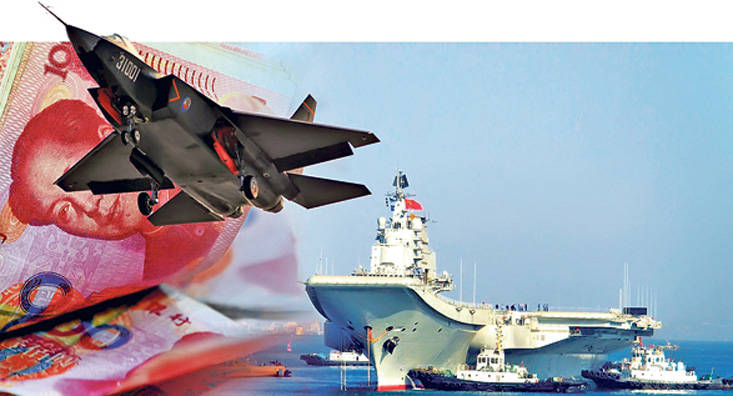
The 052D Luyang III destroyers creation program continues, the first images of which were published on the water in August 3. Observers were able to distinguish 2012 vertical launchers (TLU) of missiles of indeterminate type and designation. It is currently unknown whether the Navy will build one or two destroyers, so that each mini-series becomes more advanced within its class, or, on the contrary, will begin mass production. Most likely the second option, since China has reached maximum capacity in shipbuilding. Then the ships of obsolete classes (for example, the destroyer of the 64C project) will be gradually upgraded to match the level of new combat units.
Experts have previously noted the absence of overseas naval bases and ship replenishment ships (TFCC) as vulnerabilities of the PLA Navy. But in March and May 2012 of the year, the Chinese launched two Fuci-class payload stations, immediately doubling the number of these vessels. Beijing attaches great importance to the protection of the coastal zone. In the first half of the 2012 Navy, the country received six frigates of the 056 project. They can be used in the fight against submarines, which are now actively buying neighbors in the Asia-Pacific region (APR). A Y-8FQ (or GX-6) marine patrol aircraft is also being developed against submarines. It was first shown in November 2011. According to foreign sources, he made the first test flight no later than January 2013.

“Military Balance-2013” draws attention to the fact that China, in protecting its interests, uses not only the strengthening of military power, but also more peaceful means. This refers to economic pressure and paramilitary organizations. For example, auxiliary unarmed ships of the PRC Marine Observatory (MNF), which were repeatedly used in attempts to achieve sovereignty over a number of islands in the South China Sea. That is, Beijing has the tools to demonstrate its intentions without fear of a significant increase in tension in the APR. In general, the MNF is given considerable attention and by the end of 2018, its ranks can replenish 36 vessels. There is also the practice of transferring this organization to ships withdrawn from the PLA Navy. In particular, in the 2012, the MNS received two frigates and two auxiliary vessels, which had previously belonged to the fleet. China has four more maritime organizations. These are the command for the protection of the rights of fisheries (CPRA), the Maritime Safety Administration (ABM), the Coast Guard Service (SBO), and the General Customs Administration (GTA). The MNF and KOPR vessels are used more often than others, and together with the ABM operate in foreign ports (the SSO and GTA vessels mainly in coastal waters).
China is also developing submarine ballistic missiles. JL-2 SLBMs with a range of 7500 kilometers should reach alert in the current year, significantly strengthening the PLA Navy. Now the Navy has three nuclear submarines with ballistic missiles (SSBN) project 094 ("Jin", Jin). By 2020, their number will increase to five. In addition, projects are continuing 096 (SSBN) and 095 (nuclear submarines with missile-torpedo weapons). According to a number of reports, ballistic anti-ship missiles DF-21D, advanced versions of DF-21, with a range of 1500 kilometers are created. Back in 2010, representatives of the Republic of China in Taiwan claimed that a number of PLA units had been replenished with new medium-range ballistic missiles (RSD) DF-16.
In July, 2012, some US officials said that the People's Republic of China had conducted an intercontinental ballistic missile (ICBM) test, DF-41. It can be the first Chinese product that can hit targets in the Americas. It is assumed that the ICBM will be equipped with a separable warhead with individual targeting of warheads to specified targets (MIRV), which will significantly increase the effectiveness of its use. However, it is still unknown whether there is an MFRD of the DF-31A rocket at the most long-range missile currently available.
For the Air Force, Beijing continues to develop J-11 (Jian-11) type fighters, especially its attack version J-16 (Jian-16). Two prototypes of the J-20 fighter are being tested, the third prototype was shown in October of the 2012. Flights of this type of aircraft caused concern to Japan in August 2013. The development of the inconspicuous J-21 or J-31 fighter is interesting. Finally, the outdated types of aircraft are being replaced by the J-10 medium fighter.
The capabilities of the military transport aviation (PLA) of the PLA are increased by acquiring the Il-76 military transport aircraft (BTC) from Belarus. Negotiations with Russia on their supply were interrupted, as Moscow was unable to ensure the assembly of the required number of vehicles in the stipulated time frame. According to the experts of the Military Balance-2013, a contract for the supply of an upgraded version of the IL-76MD-90А (known as the IL-476) may be concluded soon. In addition, the PLA Air Force is developing its own PTS Y-20. Difficulties with the development of programs to strengthen the VTA may affect the creation of early warning airplanes and refueling aircraft. Currently, only five DRLO KJ-2000 aircraft have been built, while the corresponding version of the H-6 (Soviet Tu-16) remains the main tanker.
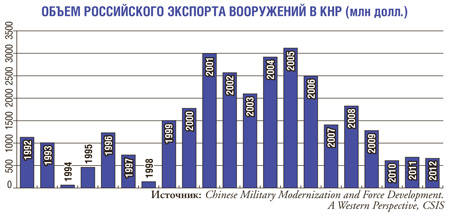 The Ground Forces (SV) have priority in planning defense expenditures, although significant sums are allocated for the re-equipment of the fleet, aviation and missile forces and artillery (MFA). According to experts, this indicates that the Chinese strategy has changed significantly. The main function of the army is the defense of borders, which confirms a clear separation between the military police and the armed forces. The main operational unit of the SV now became a brigade, not a division. Depending on the weapons, there are three types - light, medium, heavy.
The Ground Forces (SV) have priority in planning defense expenditures, although significant sums are allocated for the re-equipment of the fleet, aviation and missile forces and artillery (MFA). According to experts, this indicates that the Chinese strategy has changed significantly. The main function of the army is the defense of borders, which confirms a clear separation between the military police and the armed forces. The main operational unit of the SV now became a brigade, not a division. Depending on the weapons, there are three types - light, medium, heavy.New technology in the army enters constantly. In 2010, Mobile Land Systems, a South African company (Mobile Land Systems), bought 11 demolition proof machines (Mine-Resistant Ambush-Protected) and related technologies. In June, the Chinese company Norinko (2012) introduced a new infantry fighting vehicle (BMP), the 8M, in June. Supposedly, it used South African technology, as usually the Chinese defense industry protects its equipment with hinged armor on bolts, and in 8M photographs it is not visible. It is not yet decided whether the new BMPs will be adopted by the army and military police or will they be produced for export. Special attention is also given to second-generation anti-tank missile systems (ATGW) with guided projectiles through wires and a laser beam. Programs are being developed to create various BMPs, including light ones. In 2012, the BMP ZBD-08 began to arrive in the army. Like its predecessor, the ZBD-04, outwardly it resembles the Soviet and Russian BMP-1 and -2, but has improved armor protection and the main tool. The ZBD-08 chassis is also used for the production of other types of equipment such as the ZBD-09 wheeled armored personnel carrier and the ZBD-05 amphibious amphibious assault vehicle.
Colleagues forever
In addition to the implementation of their own weapons projects, the purchase of foreign weapons plays an important role in strengthening Chinese military power. The above information about the most interesting developments of the Chinese defense industry clearly demonstrates the importance of import. In one of the reports of the US Department of Defense, which is quoted in the report “Development and Modernization of the Chinese Armed Forces. A look from the West "of the Center for Strategic and International Studies CSIS (Center for Strategic and International Studies), says:" China relies on foreign technology, procuring key dual-use components and focuses on its own R & D to modernize the national armed forces. "
 Although the country has significantly reduced imports in absolute and relative terms since the middle of the 2000, it still acquires ready-made military systems, activates development of defense production with foreign participation, licensed production and reverse engineering (reproduction of products by copying). In addition, China is engaged in cyber espionage against certain types of weapons, for example, American F-35 fighter jets. Probably, the trend will continue over the next few years due to continuing difficulties in the development of key technologies, according to Western experts.
Although the country has significantly reduced imports in absolute and relative terms since the middle of the 2000, it still acquires ready-made military systems, activates development of defense production with foreign participation, licensed production and reverse engineering (reproduction of products by copying). In addition, China is engaged in cyber espionage against certain types of weapons, for example, American F-35 fighter jets. Probably, the trend will continue over the next few years due to continuing difficulties in the development of key technologies, according to Western experts.As noted in the SIPRI report for 2012 year, the Chinese defense industry began to produce several new types of weapons and reduced dependence on foreign supplies. While in 2003 – 2007, Beijing was the largest importer of military products in the world market, in 2008 – 2012, it moved into second place with 7,5 billion dollars, reducing purchases by 47 percent. SIPRI notes that new Chinese weapons systems continue to be based on a significant number of foreign components. About the first aircraft carrier already mentioned above. The most popular mass-produced fighters J-10 and J-11 are used by the Russian turbojet two-circuit engines (turbofan) AL-31FN and there are many such examples.
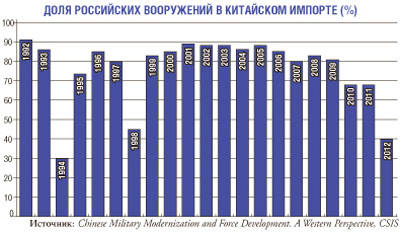 The Pentagon’s 2013 report for the year noted that Russia remains the main supplier of weapons and logistics to China, including advanced fighters, helicopters, missile systems, submarines, destroyers, as well as licenses for the production of certain types. In confirmation it is worth citing some more examples. Since 1996, Russia has exported a total of 76 Su-27 (36 Su-27SK and 40 Su-27UPC) under three contracts — two for 24 and one for 28 machines. In the same 1996, the parties signed an agreement worth 150 million dollars on the transfer of technologies and components to China, as well as providing the necessary technical support for the production of Su-27. Under the terms, Moscow pledged to help the Chinese enterprise Shenyang Aviation Company (Shenyang Aviation Company - SAC) in setting up the production line and launching the 200 Su-27 over the next 15 years. Engines, radars, avionics and weapons systems were purchased directly from Russia. Beijing also received 38 multipurpose fighter Su-30MKK and 24 fighter Su-30MK2 for PLA Navy.
The Pentagon’s 2013 report for the year noted that Russia remains the main supplier of weapons and logistics to China, including advanced fighters, helicopters, missile systems, submarines, destroyers, as well as licenses for the production of certain types. In confirmation it is worth citing some more examples. Since 1996, Russia has exported a total of 76 Su-27 (36 Su-27SK and 40 Su-27UPC) under three contracts — two for 24 and one for 28 machines. In the same 1996, the parties signed an agreement worth 150 million dollars on the transfer of technologies and components to China, as well as providing the necessary technical support for the production of Su-27. Under the terms, Moscow pledged to help the Chinese enterprise Shenyang Aviation Company (Shenyang Aviation Company - SAC) in setting up the production line and launching the 200 Su-27 over the next 15 years. Engines, radars, avionics and weapons systems were purchased directly from Russia. Beijing also received 38 multipurpose fighter Su-30MKK and 24 fighter Su-30MK2 for PLA Navy.Currently, the parties are negotiating the supply of multipurpose generation X-NUMX Su-35 ++. Initially, China wished to purchase the 4 fighter, which was enshrined in the first version of the contract. But during the negotiations, the stated number of aircraft can be changed in any direction, sources in the Russian defense-industrial complex say. Deliveries are expected from the second half of 24. The agreement also provides for the creation in China, with the help of Russian companies, of a service and technical center (STC) for servicing the Su-2014. Avionics and avionics equipment for the model is produced by the concern Radioelectronic Technologies (KRET). A company representative said that the Chinese side will receive only the hardware, and mathematical control algorithms will not be supplied. It is also about the technology of the strapdown inertial navigation system (SINS) and the latest radar system "Irbis".
Supplies of Russian fighters played a key role in the development of the Chinese military aircraft industry. A decade ago, not a single competitive combat fighter was produced there, and now JF-17 and J-10 are being exploited. Probably, they are comparable with the most modern world models. At the same time, China is releasing cheaper fighters based on the classic MiG-21, copies of the Russian Su-27 under the name J-11B and the deck fighter Su-33 - J-15. Specialists from two competing aircraft companies, Chengdu and Shenyang, have already built prototypes of the new generation of fighters, the J-20 and J-31, using stealth technology (Stealth). For them, the range of aircraft rockets has been expanded, new generation equipment has been developed, including an airborne radar with an active phased antenna array (radar with AFAR) and an infrared search and sight system.
To date, Beijing has acquired 12 non-nuclear submarines (NNS) from the 877ECM and KNOX 636 projects with a variety of weapons. In particular, Russian technologies have found application in the Chinese project 041 (class "Yuan"), which has been under way since 2004. At the start of the 2013, the PLA Navy has four submarines (330, 331, 332, 333). One submarine in construction, construction of three more boats is planned. China is now interested in acquiring new Amur-1650, the development of the central design bureau of marine equipment (CDB MT) Rubin. According to experts of the US Congressional Research Service, attention to Amur is associated with plans to further explore world-class submarine technology and incorporate them into its own developments.
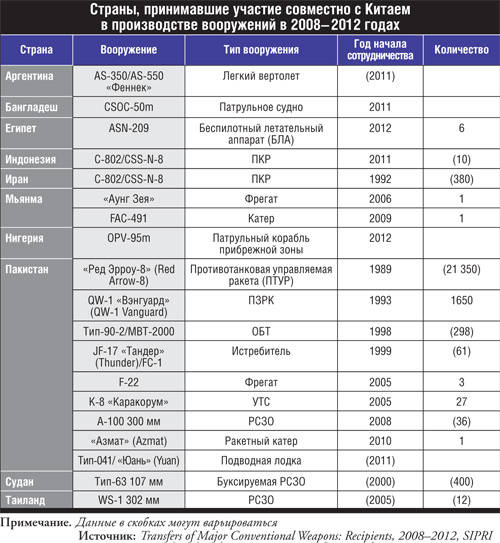
According to the representative of the TsBB MT "Rubin", the company together with Rosoboronexport is already negotiating with Beijing about the creation of submarines based on the Amur submarines, there is a corresponding framework contract signed by Rosoboronexport. “China is not interested in the purchase of submarines. Most likely, it will be a question of selective interaction by special technologies for designing individual components, ”he stressed.
China also received several C-300 anti-aircraft missile systems (ZRS) divisions, and now, according to the London weekly Jaynes Defense Weekly, referring to the Director of the Federal Service for Military-Technical Cooperation (FSMTC of Russia) Alexander Fomin, intends to acquire C-400 ZRS at the start of the 2015 of the year. But even in 2010, representatives of the Russian defense industrial complex noted problems with production at the enterprises of the Almaz-Antey Air Defense Concern, which makes it impossible to supply any systems at least until 2017. The publication also clarifies that first a certain number of C-400 should be made for the Armed Forces of the Russian Federation to replace obsolete C-300.
According to the head of Rosoboronexport, Anatoly Isaikin, the People's Republic of China is on the list of prospective buyers of the new Yak-130 training and combat aircraft developed and manufactured by Irkut. In 2012, Beijing also ordered the Mi-55 17 transport helicopters. Meanwhile, the CSIS report noted that in addition to official contracts, the Chinese use a wide, well-organized collection network from foreign sources of information on sensitive technologies and controlled exports. Many companies of the national defense industry complex carry out research work in the military and civilian sphere. These state-affiliated enterprises and scientific research institutes under the guise of civilian research provide the PLA with access to technological advances. Chinese specialists actively participate in scientific conferences and symposia, firms organize joint production and research. If it concerns key technologies in the field of national security, state-controlled equipment and other logistical support (MTO), which is inaccessible for commercial use, then Beijing uses intelligence services and other covert methods, including cyber espionage.
Copy work
American analysts are concerned that the priority of China’s strategy of acquiring advanced technologies is civil-military integration policy with the goal of developing dual-use innovations and developing an industrial base. The PRC of the PRC developed through integration with expanding civilian sectors of the economy, science and technology, especially with those that have access to foreign technologies. We are talking about advanced aviation, space, avionics and flight control systems, software codes, traveling wave tubes (TWT), night vision devices (NVD), monolithic microwave integrated circuits, information and cybernetic technologies.
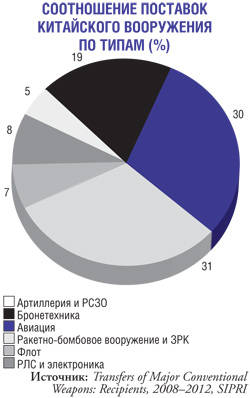 Differentiation of civilian and military products in China is very complex due to non-transparent corporate structures, hidden owners of assets and relations of personnel with the central government. Some commercial enterprises are associated with scientific research institutes of the army and government structures such as the State Commission for the Control and Monitoring of Assets. The acquisition of dual-use goods poses serious problems when it comes to a comprehensive picture of the technological capabilities of the PLA. The predominance of state-run companies in combination with state secrecy makes it difficult to track the use of individual products. Judging from the annual reports of the Pentagon, it seems likely that China will systematically exploit dual-use items for military purposes.
Differentiation of civilian and military products in China is very complex due to non-transparent corporate structures, hidden owners of assets and relations of personnel with the central government. Some commercial enterprises are associated with scientific research institutes of the army and government structures such as the State Commission for the Control and Monitoring of Assets. The acquisition of dual-use goods poses serious problems when it comes to a comprehensive picture of the technological capabilities of the PLA. The predominance of state-run companies in combination with state secrecy makes it difficult to track the use of individual products. Judging from the annual reports of the Pentagon, it seems likely that China will systematically exploit dual-use items for military purposes.Washington fears that the participation of the PLA in observer status at international exercises using American equipment and weapons under certain circumstances may lead to unintended consequences and unauthorized disclosure of data. “Tiananmen Sanctions” The United States prohibits the transfer to China of US military supplies, defense services, technical data and / or technology, as well as disclosure of information on them. In addition, the law on the control of the export of arms and the manual on the international arms trade characterize China as a country for which the US prohibits the transfer or export of military equipment, including technical data, and services in the defense industry.
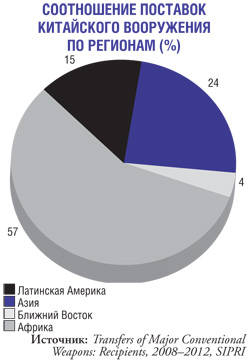 In general, specialists have the impression that Beijing no longer relies on imports to modernize its army. The country's industry demonstrates the ability to engage in virtually all sectors without external assistance; there has been a tendency to reduce the technological gap between the most developed Western countries. However, a sudden cessation of purchases abroad can significantly delay the systemic rearmament of the army. Probably, dependence on reverse engineering (reproduction), and de facto from foreign arms will last at least one more decade, experts conclude. Many modern Chinese weapons systems, especially aircraft, are imported from Russia (Su-27 and Su-30) or are copies of Russian developments. In addition, much of the local development systems are based on foreign technologies. In particular, helicopters, radar stations and aircraft engines are developed, imported or manufactured under licenses with extensive use of Russian and European technologies. Also a pressing issue for the PRC is the quality of military products using the reverse engineering method. Experts rate it as very low, which makes it difficult for high-tech weapons to adapt to the PLA.
In general, specialists have the impression that Beijing no longer relies on imports to modernize its army. The country's industry demonstrates the ability to engage in virtually all sectors without external assistance; there has been a tendency to reduce the technological gap between the most developed Western countries. However, a sudden cessation of purchases abroad can significantly delay the systemic rearmament of the army. Probably, dependence on reverse engineering (reproduction), and de facto from foreign arms will last at least one more decade, experts conclude. Many modern Chinese weapons systems, especially aircraft, are imported from Russia (Su-27 and Su-30) or are copies of Russian developments. In addition, much of the local development systems are based on foreign technologies. In particular, helicopters, radar stations and aircraft engines are developed, imported or manufactured under licenses with extensive use of Russian and European technologies. Also a pressing issue for the PRC is the quality of military products using the reverse engineering method. Experts rate it as very low, which makes it difficult for high-tech weapons to adapt to the PLA.Quickly, secretly and cheaply
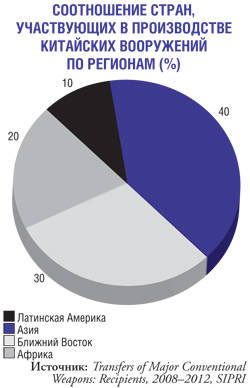 Partially imports of foreign weapons are compensated by the export of Chinese weapons products. This is a small segment in the trade balance of a huge power, but the growth rates are impressive. Between 2002 – 2006 and 2007 – 2011, the export of Chinese weapons grew by 95 percent. At the beginning of 2013, SIPRI announced that China is in fifth place on the list of the world's largest arms exporters. According to estimates of the Pentagon in 2007 – 2011, the Celestial Empire has signed contracts for the supply of conventional weapons for various purposes with a total value of 11 billion dollars. In 2012, the PRC demonstrated the Yilun UAV, which may also be sold on the foreign market. From the beginning of 2012, it was assumed that Chinese arms exports will grow at a slower pace as defense industry develops. The main consumers of Chinese drug products are countries in Asia, the Middle East and North Africa, and the largest partner is Pakistan. Beijing not only exports finished products there, but also participates in joint weapons programs, such as the JF-17 Thunder fighter (Thunder), frigates with helicopters aboard the F-22P, the K-8 Karakorum jet missiles, the F- 7, ARLO aircraft, MBT, air-to-air missiles, anti-ship missiles, light armored vehicles.
Partially imports of foreign weapons are compensated by the export of Chinese weapons products. This is a small segment in the trade balance of a huge power, but the growth rates are impressive. Between 2002 – 2006 and 2007 – 2011, the export of Chinese weapons grew by 95 percent. At the beginning of 2013, SIPRI announced that China is in fifth place on the list of the world's largest arms exporters. According to estimates of the Pentagon in 2007 – 2011, the Celestial Empire has signed contracts for the supply of conventional weapons for various purposes with a total value of 11 billion dollars. In 2012, the PRC demonstrated the Yilun UAV, which may also be sold on the foreign market. From the beginning of 2012, it was assumed that Chinese arms exports will grow at a slower pace as defense industry develops. The main consumers of Chinese drug products are countries in Asia, the Middle East and North Africa, and the largest partner is Pakistan. Beijing not only exports finished products there, but also participates in joint weapons programs, such as the JF-17 Thunder fighter (Thunder), frigates with helicopters aboard the F-22P, the K-8 Karakorum jet missiles, the F- 7, ARLO aircraft, MBT, air-to-air missiles, anti-ship missiles, light armored vehicles.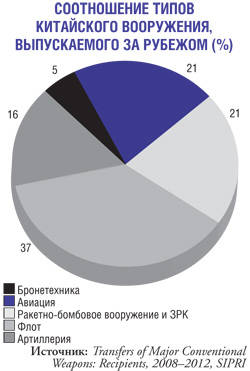 Sub-Saharan African countries see China as a supplier of low-cost weapons, whose political influence is less compared to other exporters. For Beijing, in turn, such trade is important as a comprehensive means of improving trade relations, guaranteeing access to national resources (especially oil), increasing influence in the region, strengthening international status. Unauthorized deliveries of Chinese weapons to African states are a matter of concern for the United States and the United Nations. In June, 2012, an attempt was made to regulate the market for small arms by signing a relevant agreement.
Sub-Saharan African countries see China as a supplier of low-cost weapons, whose political influence is less compared to other exporters. For Beijing, in turn, such trade is important as a comprehensive means of improving trade relations, guaranteeing access to national resources (especially oil), increasing influence in the region, strengthening international status. Unauthorized deliveries of Chinese weapons to African states are a matter of concern for the United States and the United Nations. In June, 2012, an attempt was made to regulate the market for small arms by signing a relevant agreement.As noted in one of the reports of the Congressional Research Service, China did not enter the world arms trade market until the start of the Iran-Iraq war (1980 – 1988). The main characteristic of exports was its general availability, weapons were supplied under any conditions and in any number of participants in hostilities, regardless of the presence of an international embargo. So the Chinese arms business has become regional, focused on the third world. In 2005, the amount of multilateral contracts was estimated at 2,7 billion dollars, at 2007 –– 2,5, at 2008 – 2011 –– 2 billion. Already in the next fiscal year, the country signed agreements for the supply of defense products in the amount of 2,1 billion. Basically, the Chinese sell small weapon systems and components to them. For example, anti-ship missiles are shipped to Iran, anti-tank missile systems are delivered to Pakistan. China is a member of the “Missile Technology Export Control Regime” and its business in this area may adversely affect attempts to limit the turnover of advanced systems for various purposes. Nevertheless, most of the products are significantly inferior to the Russian and Western counterparts in manufacturability and quality. Therefore, prospects for China in the near future are dubious to become the main supplier of weapons to developing countries.
Information